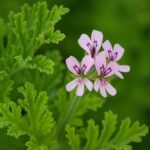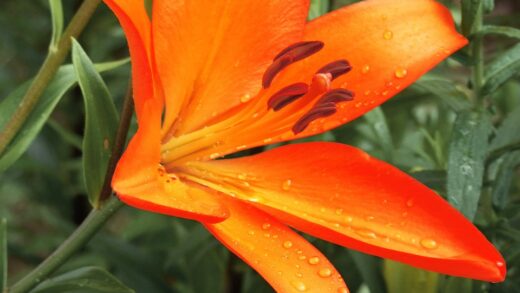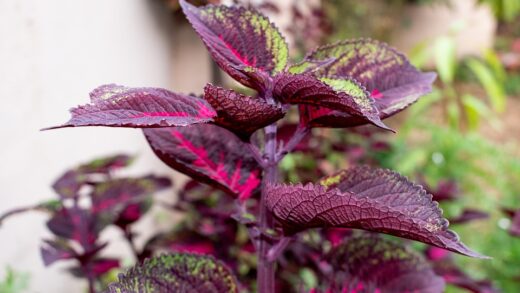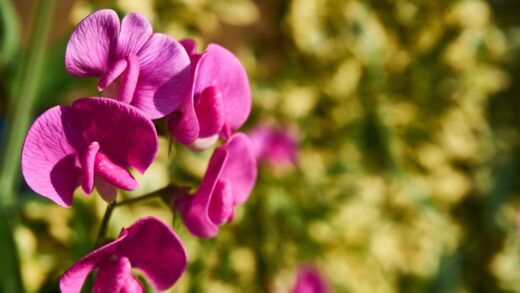Sunlight is the fundamental source of energy for nearly all plant life, and for a flowering shrub like ‘The Fairy’ rose, it is the single most important environmental factor determining its overall health, vigor, and, most critically, its ability to produce a profusion of blooms. The process of photosynthesis, through which plants convert light energy into the chemical energy needed for growth, is directly fueled by sunlight. For a repeat-blooming variety such as ‘The Fairy’, which expends a tremendous amount of energy to flower continuously for months, an abundant supply of light is not just beneficial—it is absolutely essential. Understanding and providing the optimal light conditions for this rose is the first and most crucial step towards achieving the lush, flower-laden display it is famous for.
The quantity and quality of light a rose receives directly impacts virtually every aspect of its development. Sufficient sunlight promotes strong, sturdy cane growth, encourages dense foliage, and powers the production of the vibrant pink blossoms that define the variety. Conversely, a lack of adequate light will invariably lead to a plant that is weak, spindly, and “leggy” as it stretches in a desperate search for more light. The foliage will be sparse, the leaves may be a paler shade of green, and, most disappointingly for the gardener, flower production will be significantly reduced or may fail to occur at all.
Furthermore, proper light exposure plays a vital role in disease prevention. A rose situated in a bright, sunny location with good air circulation will have foliage that dries quickly after rain or morning dew. This rapid drying time dramatically reduces the window of opportunity for common fungal diseases like black spot and powdery mildew to take hold, as their spores require prolonged periods of moisture to germinate and infect the plant. A plant weakened by insufficient light is also generally more susceptible to both diseases and pest infestations, making proper siting a cornerstone of an integrated pest and disease management strategy.
This article will delve into the specific light requirements needed for ‘The-Fairy’ rose to thrive. We will define what constitutes “full sun” in a garden context and explain why this level of exposure is so critical for this particular variety. We will also explore the plant’s tolerance for partial shade and the compromises in performance a gardener can expect in such conditions. Finally, we will provide practical advice on how to select the best possible planting site in your garden and how to assess and adapt to the unique light patterns of your landscape to ensure your rose receives the energy it needs for a spectacular seasonal display.
The critical need for full sun
For ‘The Fairy’ rose to perform at its peak potential, it must be planted in a location that receives full sun. In horticultural terms, “full sun” is defined as a site that receives a minimum of six hours of direct, unfiltered sunlight each day. For a heavy-blooming shrub like ‘The Fairy’, more is often better, with eight or more hours of sun being the ideal scenario. This substantial daily dose of light energy is required to fuel the continuous cycle of growth and flower production that makes this variety so popular. Without this level of light exposure, the plant simply cannot generate enough energy to sustain its characteristic profuse blooming habit.
More articles on this topic
The benefits of a full-sun location extend beyond just the quantity of flowers. Roses grown in ample sunlight develop a stronger, more robust structure. The canes will be thicker and sturdier, better able to support the weight of the numerous flower clusters without bending or breaking. The foliage will be dense and lush, with leaves that are a deep, healthy green color, indicating efficient photosynthesis. This overall vigor makes the plant more resilient and better able to withstand environmental stresses such as drought, pests, and diseases. A rose grown in optimal light is a healthy rose, and a healthy rose is a beautiful rose.
The timing of the sun exposure can also be significant. A location that receives several hours of morning sun is particularly advantageous. The gentle morning light is less intense than the harsh afternoon sun, but it plays a crucial role in plant health. It works to quickly dry the dew that has collected on the leaves overnight. This is a critical factor in preventing fungal diseases, as the spores of pathogens like black spot and powdery mildew need moisture to germinate. By minimizing the time the leaves remain wet, a sunny eastern exposure acts as a natural disease preventative, reducing the need for fungicidal sprays.
When selecting a site, it is important to consider the entire growing season. A spot that is in full sun in June might be in partial shade by August as the angle of the sun changes. Observe the light patterns in your garden throughout the day and at different times of the year before making a final decision. Also, be mindful of future growth from nearby trees or shrubs that could eventually cast shade on your rose bed. Investing the time to find the absolute best, sunniest location in your garden is the most important investment you can make in the long-term health and beauty of your ‘The Fairy’ rose.
Understanding partial shade tolerance
While full sun is the undisputed ideal for ‘The Fairy’ rose, it is known to have a degree of tolerance for partial shade, more so than many other rose varieties, particularly hybrid teas. Partial shade is typically defined as a location that receives between three and six hours of direct sun per day. A plant situated in such a condition can still survive and grow, but it is important for the gardener to have realistic expectations about its performance. The most noticeable difference will be in the quantity of flowers produced. A ‘The Fairy’ rose in partial shade will not bloom with the same breathtaking profusion as one grown in full sun.
More articles on this topic
In a partial shade environment, the rose will naturally divert more of its limited energy resources towards vegetative growth—producing longer stems and larger leaves—in an effort to reach more light. This often results in a more open, airy, and somewhat lankier growth habit compared to the dense, compact mound that is typical of plants grown in full sun. While the plant may still be healthy, its overall form and structure can be altered by the lower light conditions. You may find that it requires more careful pruning to maintain an attractive shape.
If your only available planting site is one with partial shade, try to choose a location that receives morning sun rather than just afternoon sun. As mentioned previously, the morning sun is vital for drying the foliage and preventing disease. A location that is shaded in the morning but receives intense afternoon sun can be stressful for the plant and may lead to issues like leaf scorch. Furthermore, the increased likelihood of fungal diseases in shadier, more humid conditions means that a gardener must be extra vigilant about providing good air circulation and practicing good garden sanitation.
Ultimately, while ‘The Fairy’ rose can “tolerate” partial shade, it will not “thrive” in it. It is a testament to the plant’s inherent toughness that it can perform reasonably well in less-than-ideal conditions. However, if abundant flowers are your primary goal, you should make every effort to provide it with at least the minimum six hours of direct sunlight. If your garden is predominantly shady, you might consider other shade-tolerant flowering shrubs that are better adapted to those conditions, rather than asking a sun-loving plant like ‘The Fairy’ to perform in an environment where it cannot be at its best.
Assessing light conditions in your garden
Before you can choose the perfect spot for your rose, you must first become a student of the sun’s path across your property. The amount of light a specific area receives is influenced by numerous factors, including the orientation of your house, the presence of trees and other tall structures, and even the slope of your land. The best way to accurately assess the light conditions is through direct observation. On a sunny day, make a point of checking the potential planting spot several times: once in the morning, once at midday, and once in the late afternoon. This will give you a clear picture of when the area is in sun and when it is in shade.
For a more methodical approach, you can create a simple sun map of your garden. Sketch a basic layout of your property, noting the locations of your house, garage, fences, and any significant trees or shrubs. Throughout a sunny day, perhaps once every hour or two, visit your garden and shade in the areas on your map that are not receiving direct sun. By the end of the day, you will have a detailed visual record of your garden’s light patterns, clearly identifying the areas that receive six or more hours of sun, those that are in partial shade, and those that are in full shade.
Remember that light patterns are not static; they change with the seasons. The sun’s path is much higher in the sky during the summer than it is in the spring or autumn. This means that an area shaded by your house in April might be in full sun by June. It is also important to consider the effect of deciduous trees. A spot under a large maple tree might be perfectly sunny in early spring before the tree has leafed out, but will be in dense shade for the entire summer once the tree’s canopy is full. When assessing a site, you must consider the light conditions during the peak growing season, from late spring through summer.
There are also modern tools that can assist you in this task. A variety of smartphone apps are available that can use your phone’s camera and GPS to track the sun’s path and calculate the amount of direct sunlight any given spot will receive throughout the year. These can be particularly helpful for planning new garden beds. Whether you use a simple hand-drawn map or a high-tech app, taking the time to thoroughly assess your garden’s unique light conditions is an essential prerequisite for successful rose gardening.
Consequences of inadequate light
The consequences of planting ‘The Fairy’ rose in a location with insufficient light are predictable and often disappointing for the gardener. The most immediate and noticeable effect is a dramatic reduction in flowering. The plant may produce a small flush of blooms in early summer but will likely fail to repeat-bloom with any vigor throughout the rest of the season. In very shady conditions, the rose may not produce any flowers at all, as it will be channeling all of its limited energy reserves into simple survival and a futile attempt to grow towards a light source.
A lack of light also has a significant impact on the plant’s physical structure. Without strong sun to encourage bushy growth, the rose will become etiolated, a term used to describe the weak, spindly, and pale growth of plants grown in low light. The stems will be thinner and more elongated as they stretch towards the nearest source of light, resulting in a floppy, open habit that lacks the attractive, dense form of a healthy specimen. The leaves will be smaller, spaced further apart on the stems, and will often be a lighter, less vibrant shade of green.
Plants that are weakened by a lack of light are significantly more susceptible to both pests and diseases. The shady, humid environment itself is more conducive to the development of fungal diseases like powdery mildew. Furthermore, the plant’s own defenses are compromised. A light-starved plant does not have the energy to produce the thick, waxy cuticle on its leaves that can act as a physical barrier to pathogens, nor does it have the resources to mount a strong defense against insect attacks. As a result, a rose grown in too much shade will be in a constant state of stress, making it a prime target for a host of problems.
If you have a ‘The Fairy’ rose that is underperforming and you suspect that inadequate light is the cause, the best course of action is to move it. The optimal time to transplant a rose is during its dormant season, either in late autumn or early spring. While moving an established shrub is a significant undertaking, it is often the only solution to correct a poor initial siting choice. By relocating the rose to a site that meets its light requirements, you can give it a new lease on life and finally enjoy the spectacular floral display that this variety is capable of producing.
















